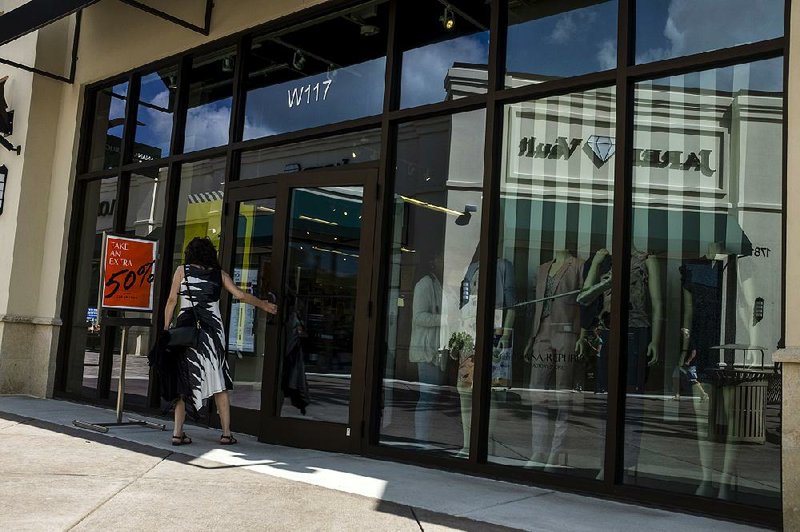As Gap Inc. Chief Executive Officer Art Peck evaluated the sprawling chain's more than 3,000 stores earlier this year, a painful conclusion stared back at him: Hundreds of them could never be saved.
Even after several previous rounds of store closings, the company's Gap and Banana Republic locations were languishing. Same-store sales have fallen 13 of the past 14 quarters at its namesake chain, and they've tumbled the past 10 straight quarters at Banana Republic. The brands were tired, and something needed to be done.
So Peck made one of the biggest decisions of his two-year stint as CEO: He would close about 200 Gap and Banana Republic stores -- locations he calls "terminally ill" -- and refocus on two newer brands: Old Navy and Athleta.
In many ways, the move was a long time coming. Old Navy has been the company's biggest division for the past three fiscal years, and it's estimated to account for about a third of the corporate parent's value. But the shift away from Gap and Banana Republic puts more pressure on Old Navy to be the company's consistent -- and long-term -- growth engine, meaning there's less margin for error.
"We're certainly not giving up on Gap or Banana, but we're acknowledging the world continues to change," Peck, 62, said in an interview. "And those are the two most mature brands in the portfolio."
The plan isn't a "reboot" of the company, Peck said. Instead, he's "drawing a line in the sand." The idea is to focus on the areas with the most potential for fueling growth -- rather than having unrealistic expectations for the older divisions.
When Old Navy debuted in 1994, it was meant to help Gap attract families looking for lower-priced merchandise. Gap executive Mickey Drexler, who later ran J. Crew, helped start the brand, and it relied on quirky marketing campaigns to stand out. Campy ads featuring Vogue fashion editor Carrie Donovan and celebrities such as Morgan Fairchild -- along with a dog named Magic -- quickly turned the chain into a household name in the U.S.
In later years, the chain rode the wave of "athleisure," the trend of wearing sweats and other athletic clothing for casual wear. Athleta, Gap's yoga apparel chain, also has benefited from that shift.
But Old Navy -- with its lower prices -- ultimately cannibalized the Gap, said Liz Dunn, head of consulting firm Talmage Advisors. As Gap's sales declined, the company had to accept losing customers to its sister brand, Dunn said. Otherwise, shoppers might head for competitors.
"It's been a smart trade over the long term," she said. "While they didn't initially envision that being Old Navy's role, it's probably better than the alternative."
Old Navy now contributes about three-quarters of the company's profit, compared with Gap's 7 percent, according to Jefferies analyst Randal Konik. He estimates that Old Navy accounts for about 30 percent of the retailer's enterprise value.
Gap investors clearly like the idea of Old Navy becoming the company's core business. The stock jumped 7.4 percent on Sept. 6, when Peck announced that he would be closing the poor-performing Gap and Banana Republic stores. He plans to open 270 Old Navy, outlet and Athleta locations in their stead.
As part of the push, Gap expects Old Navy's sales to top $10 billion in the coming years, with Athleta exceeding $1 billion.
Investors had been valuing the organization as if the Gap chain was driving the bus, Konik said in a report. And yet, most of the profit is coming from Old Navy. As shareholders re-evaluate the company, he expects the shares to continue rising.
But Old Navy has had its own stumbles.
Sales growth stalled in 2015 after brand chief Stefan Larsson quit to become CEO of Ralph Lauren Corp. He had worked to bring more of a fashion sense to the division, and his abrupt departure left Old Navy in upheaval. Growth wasn't restored until the middle of 2016.
The key to the chain's future success is speed. It competes with fast-fashion companies like H&M, and those chains have a very quick metabolism. Clothing racks have to be stocked with the latest styles, or shoppers will go elsewhere.
To stay relevant, Old Navy has put a big emphasis on accelerating its supply chain. About half of the chain's products can go from idea to shelf in six to 15 weeks. The rest of the brand has a turnaround time of about 22 weeks, Peck said earlier this month. The apparel industry averages 36 to 42 weeks, he said.
Gap is now looking to get its other brands to use the same approach.
"It's just better suited to modern retailing," said Bridget Weishaar, an analyst at Morningstar.
But even if Old Navy has the right formula, opening up hundreds of new stores could bring fresh risks. If consumers shift away from sporty clothing, the company will be more exposed than before.
"Just because it's working now doesn't mean it's going to work 10 years from now," Weishaar said.
Business on 09/16/2017
